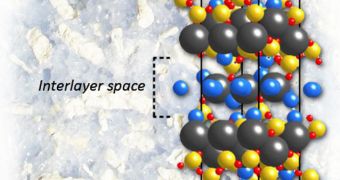Concrete made with Portland cement is the second-most used material in the world by volume, exceeded only by water. Its production process releases massive amounts of carbon dioxide, and so replacing it requires a deeper understanding of its structure at the nanoscale.
This was the purpose of a new study conducted by experts at the US Department of Energy's (DOE) Lawrence Berkeley National Laboratory (Berkeley Lab). They pressed one of the basic components of Portland cement – the mineral tobermorite – inside a diamond anvil cell in a new experiment.
The work was carried out at the Advanced Light Sources' (ALS) beamline 12.2.2, where strong X-rays were made to pass through the mineral as the diamond anvil was applying pressure levels similar to those found about 100 miles (161 kilometers) underground.
This allowed experts to measure the bulk modulus of tobermorite, in effect, its stiffness. The X-ray beams produced diffraction patterns from which this property could be extracted, the team explains.
“Portland cement is the most important building material in the world, but if we are going to find ways to use it more efficiently – or just as important, search for practical alternatives – we need a full understanding of its structure on the nanoscale,” Paulo Monteiro explains.
He holds an appointment as a professor of civil and environmental engineering at the University of California at Berkeley. Monteiro was also the leader of the team that carried out the research, details of which will appear in an upcoming issue of the esteemed journal Cement and Concrete Research.
Now that experts are aware of the nanoscale structure of this basic component in cement, they could potentially develop a method of constructing a similar material, which would not require as many resources to produce, or use as much energy during the process.
More than 17 billion tons of concrete are produced yearly, and the carbon dioxide emissions associated with this are responsible for as much as 5 percent of the entire amounts of carbon being released into Earth's atmosphere, and contributing to global warming.

 14 DAY TRIAL //
14 DAY TRIAL //